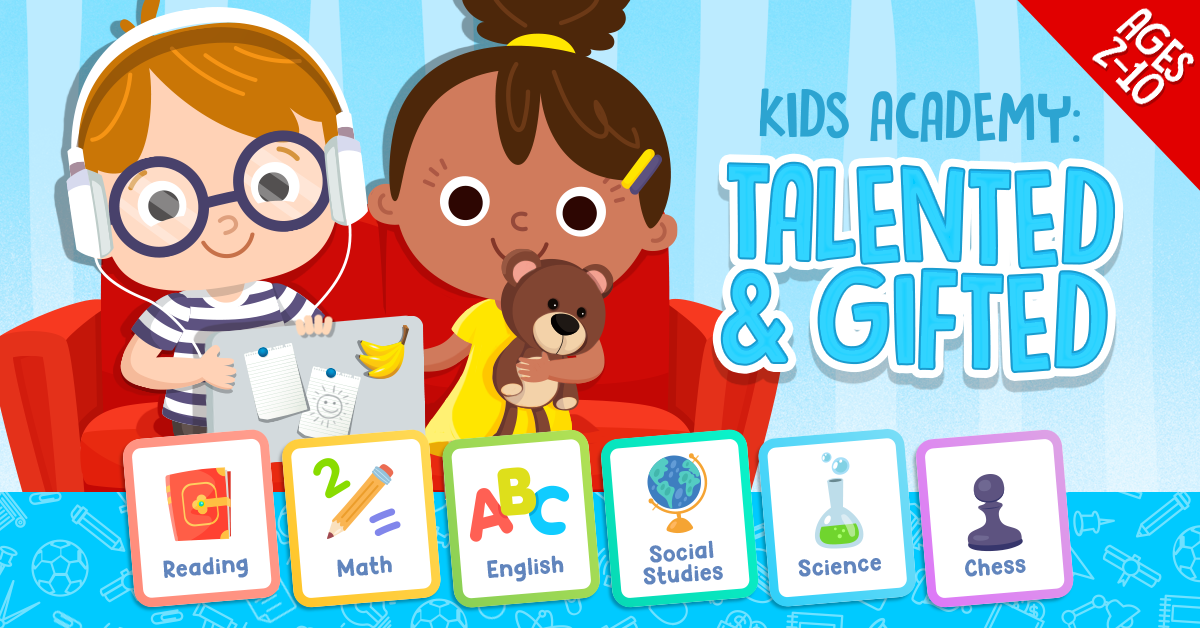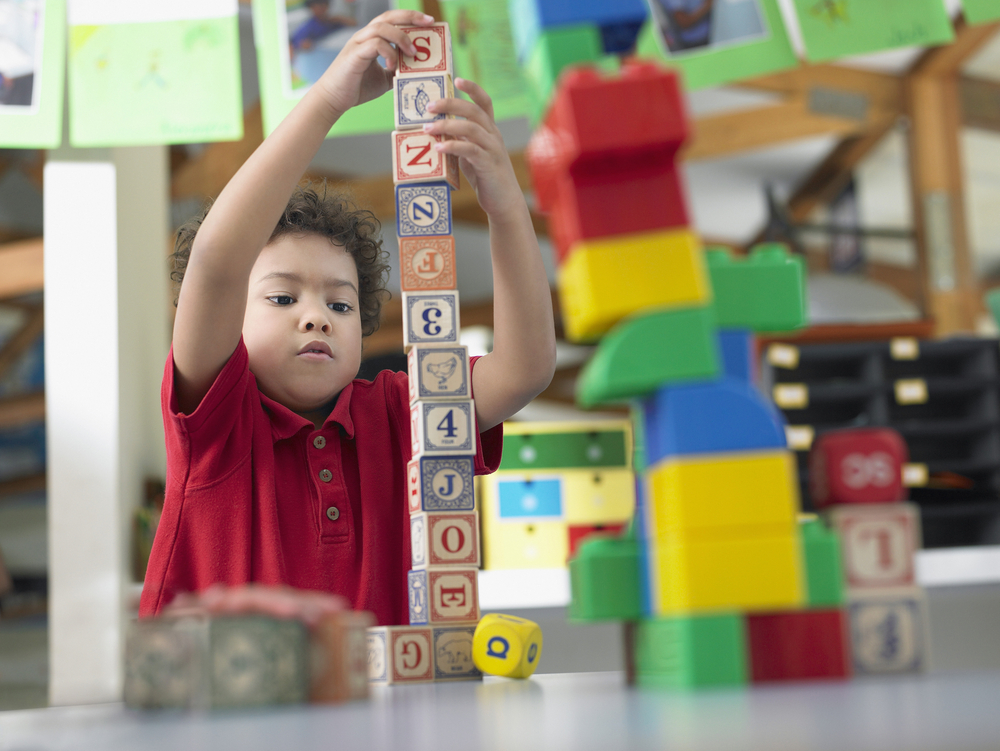Animal identification Normal Math Worksheets
3 filtered results
-
From - To
Explore our "Animal Identification Normal Math Worksheets" to combine fun and learning in one engaging activity. Designed for early learners, these worksheets reinforce basic math skills while teaching children to recognize and identify various animals. Each worksheet is creatively designed with colorful images and math problems that relate to the animals pictured, fostering both numerical and zoological knowledge. Perfect for use at home or in the classroom, our worksheets support cognitive development by integrating counting, sorting, and basic arithmetic with enjoyable animal-themed exercises. Visit our website to download and watch your child have fun while learning!
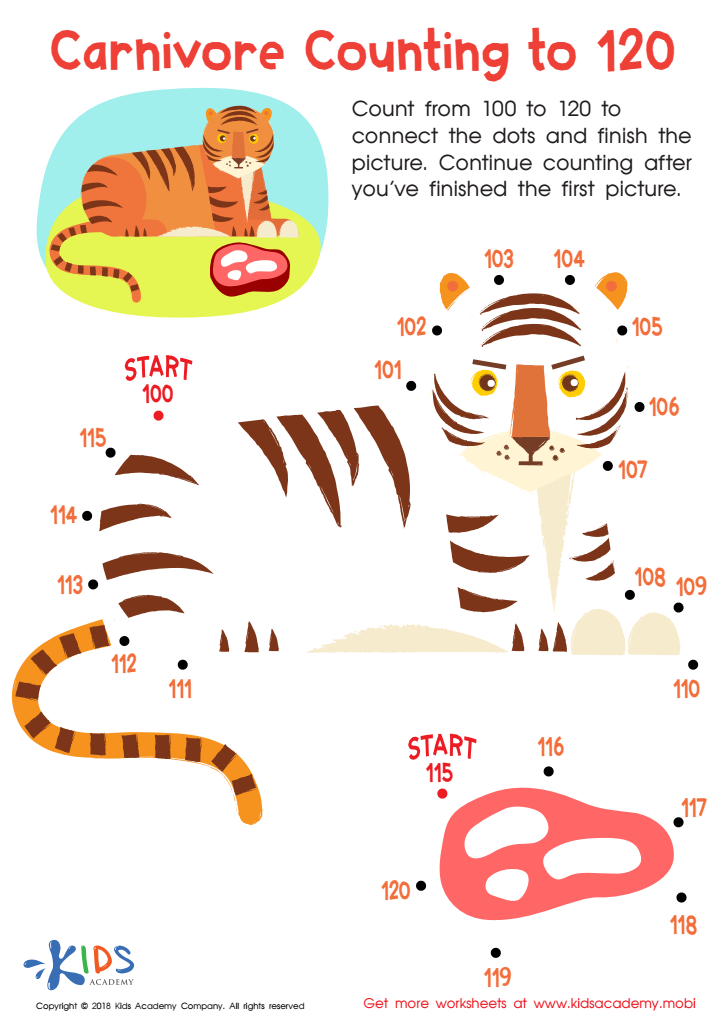

Carnivore Counting to 120 Worksheet
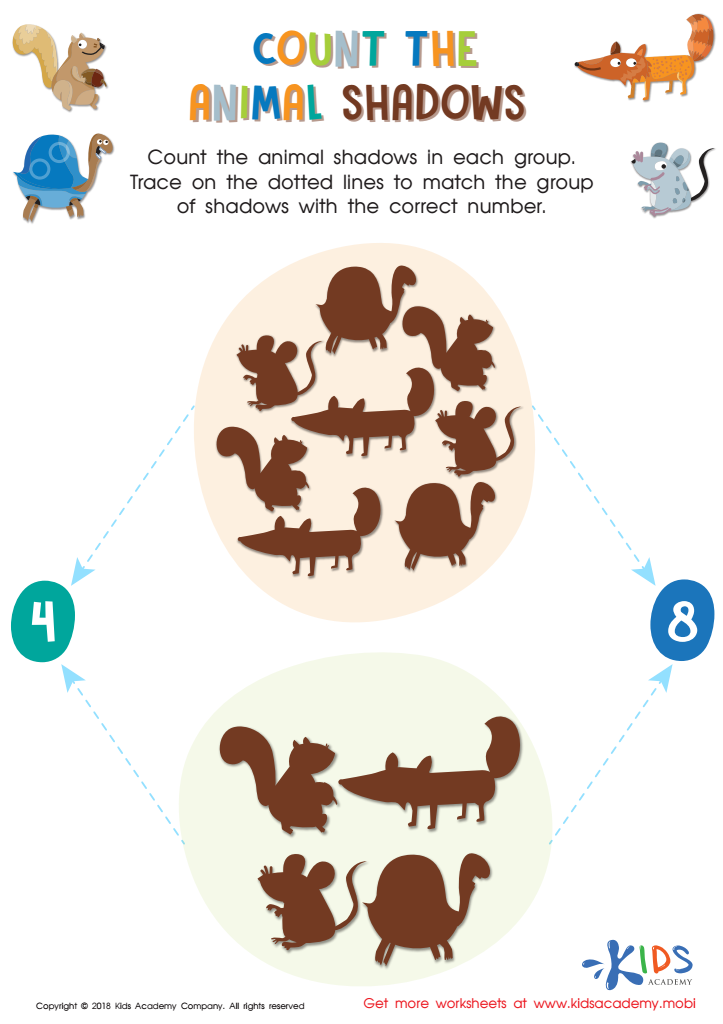

Count the Animal Shadows Worksheet
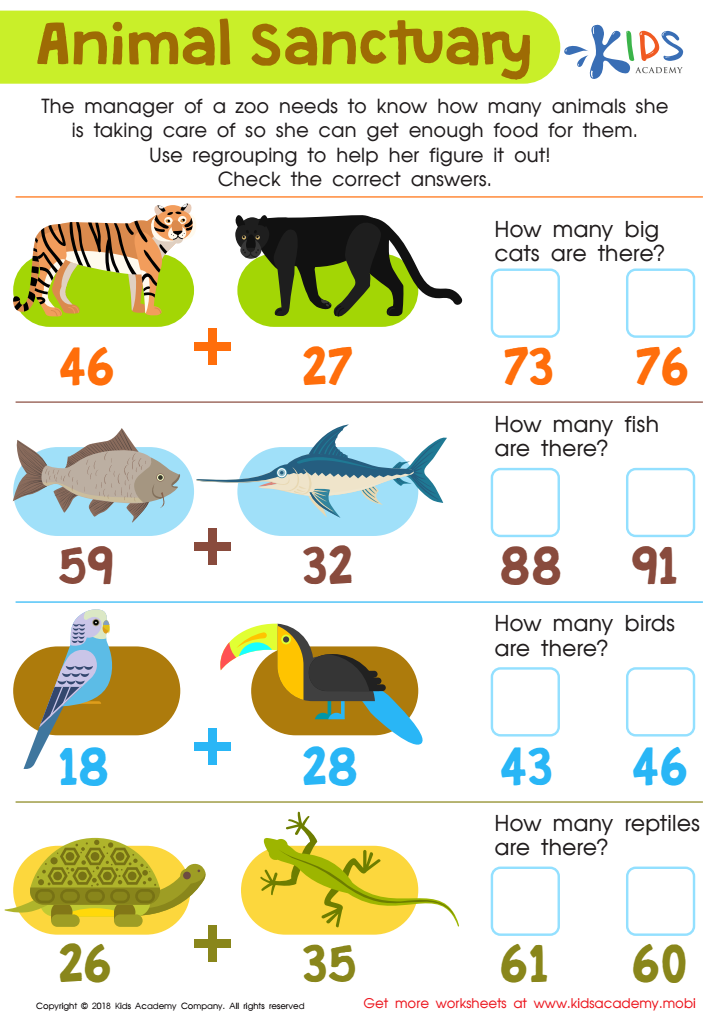

Animal Sanctuary Worksheet
Helping children understand animal identification and integrate it with basic math skills is a crucial educational strategy for parents and teachers. Animal identification develops children's observational skills and their appreciation for biodiversity. Teaching children to identify animals fosters curiosity and awareness about the natural world, which is essential for fostering a sense of responsibility toward environmental stewardship.
Integrating animal identification with normal math subjects enriches the learning experience by applying mathematical concepts in a tangible way. For instance, children can count the number of legs, spots, or stripes an animal has, or compare the sizes and weights of different animals. This practice not only reinforces counting and measurement skills but also introduces basic statistical concepts such as grouping and categorization.
Furthermore, this integrated learning approach helps to broaden children's cognitive abilities. It encourages critical thinking and problem-solving skills as they make connections between animals’ characteristics and their mathematical properties. Using animals they find intriguing can make abstract concepts more relatable and interesting for children, leading to a better retention and understanding of math.
In essence, combining animal identification with math creates a dynamic and holistic learning environment. By doing so, parents and teachers not only foster a layered and rich educational experience but also contribute to the holistic development of the child.
 Assign to My Students
Assign to My Students



